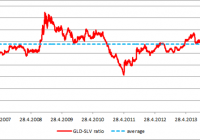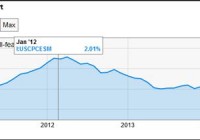Inside The 2 New Innovative Biotech ETFs From BioShares
The biotechnology corner of the broader health care industry has been one of the best performing U.S. sectors this year despite some temporary glitches and rough trading in between. Encouraging industry trends, increasing merger and acquisition (M&A) activities, expansion into emerging markets and ever-increasing health care spending led the sector to easily outperform the broader U.S. equity markets. Encouraged by the high growth potential offered by this sector, issuers are launching innovative products to attract investors to this space. In fact, the new issuer – BioShares – has gone a step further to launch two new funds that look to provide exposure to two distinct groups of stocks – one focusing on earlier clinical trial stage companies and the second looking to provide exposure to advanced products stage companies with FDA approved drugs. The two passively managed funds – BioShares Biotechnology Clinical Trials Fund (NASDAQ: BBC ) and BioShares Biotechnology Products Fund (NASDAQ: BBP ) – follow an equal-weighted strategy which diminishes single-stock risk and results in a well-diversified portfolio. Also, both the funds charge 85 basis points as fees. BBC and BBP in Focus BBC tracks the LifeSci Biotechnology Clinical Trials Index to measure the performance of biotechnology companies with a primary product offering that is in a Phase 1, Phase 2 or Phase 3 clinical trial stage of development. These biotechnology clinical trial companies conduct clinical human trials with the ultimate aim of gaining FDA approval. With this focus, the fund presently holds a basket of 68 stocks focusing mainly on small caps. Auspex Pharmaceuticals Inc. (NASDAQ: ASPX ) occupies the top spot with 2.85% allocation, followed by 1.65% to Retrophin Inc. ( OTC:RTRX ) and 1.59% to Sage Therapeutics Inc. (NASDAQ: SAGE ). BBP, on the other hand, tracks the LifeSci Biotechnology Products Index to measure the performance of biotechnology companies with a primary product offering that has received U.S. Food and Drug Administration approval. The companies within the index have developed at least one drug that has been approved by the FDA and has gone into commercial production. Moreover, these companies primarily focus on sales and marketing to raise awareness of their new product launches. BBP currently holds a basket of 36 stocks with NPS Pharmaceuticals Inc (NASDAQ: NPSP ), ImmunoGen Inc. (NASDAQ: IMGN ) and Halozyme Therapeutics Inc (NASDAQ: HALO ) being the top three holdings, each with a little over 3% exposure. Companies forming part of BBP and BBC’s index should have a minimum of $250 million in market capitalization and a minimum average daily volume of $1 million. How Might it Fit in a Portfolio? The above two funds are an interesting choice for investors seeking to gain exposure to the high potential biotech space. The funds give investors a choice to select the group of biotech companies they want to invest in – as in earlier clinical trial stage companies or advanced products stage companies. These two groups of companies are typically found together in most of the Biotech ETFs currently trading in the market. Moreover, biotech companies are expected to continue benefiting from increased M&As in the space, boom in health care activities and an aging global population, reigniting higher health care utilization. Can it Succeed? The biotech space is moderately populated though there are a few competitors to these funds. There are presently six regular Biotech ETFs in the market. Among them, iShares Nasdaq Biotechnology Index Fund (NASDAQ: IBB ) is the largest and most popular fund in the space with an asset base of $6.5 billion and average trading volume of 1.4 million shares. The fund has returned 33.8% this year. First Trust Amex Biotechnology Index Fund (NYSEARCA: FBT ) and SPDR S&P Biotech ETF (NYSEARCA: XBI ) are two other funds which have garnered $1.9 billion and $1.4 billion in assets, respectively. Investors should note that all the above-mentioned ETFs charge less than the two new funds from BioShares. The expense ratios of IBB, FBT and XBI stand at 0.48%, 0.60% and 0.35%, respectively. Consequently, BBP and BBC might have a difficult time attracting investors from a price perspective. However, if the funds manage to deliver better returns than the veterans in the space, they might eventually gain popularity.

